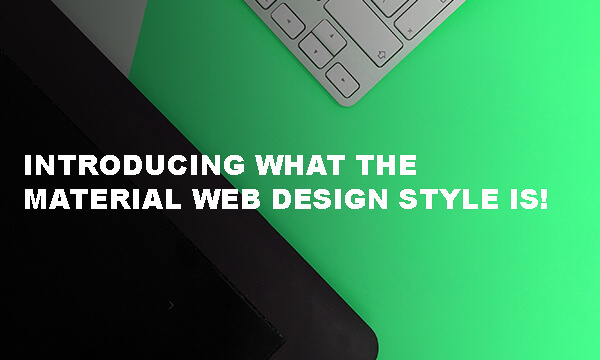Introducing the Material Design Style and its Application.
Following the significant success of the Bootstrap framework and the attention of website designers in the world, Google has come to the forefront of its features and standards that Twitter has introduced and expanded. Material Design, originally a conceptual guide to creating a standard web design, was a big step forward, and with the introduction of Material Design Lite has become a practical web designer.
Website designers are always faced with the challenge of creating an intuitive language for users, in addition to being consistent with the principles of classical design, including new and innovative features and technologies. In 2014, Google released Material Design with the goal of providing guidance for a beautiful design, user-friendly interface, and responsive design.
The purpose of the Design and Introduction of Material Design is to combine the principles of classical design with the features and technologies of the day. Also, Material Design creates a special balance between beauty and user-friendliness and provides the perfect solution for creating modern websites.
Why use Google’s Material Design?
The design principles of material design are based on the movement and attraction of the viewer. The main elements on each website, such as typography, color, empty spaces, and much more, are all designed to attract the attention of the viewer. This combination focuses on the user’s eyes on the concepts.
Informal selection of colors, text display in the right size, beautiful graphics elements, empty spaces all produce eye-catching graphic visuals. Movement animation also plays an important role in the beauty and attractiveness of the outlet, and for each movement, a specific concept and function are taken into consideration.
Inventory design with Inline Material
In early July 2015, Google released its new Material Design Lite framework. The Material Design framework is easy to install, easy to load and has a capacity of 25KB (compressed). Inventory includes a library of components and themes in the form of HTML, CSS, and JS.
Google offers several standard and default templates to get you started, all of which include elements such as creativity and beauty, along with easy-to-use, intuitive design.
Read Why do you need a website? article.
Sample admin panel template with Material Design
The Material Development Library includes a huge range of different components that we can point to, such as, push button, pagination, and more. These components are all based on defined standards and are provided with specific principles. Material Design developers promise to add code to this sample and add new features.
To access the Material Design Framework and download resources, you can go to the main source of materials design at the GitHub website or go straight to Material Design Lite and get the latest version.
Material Design in modern browsers like Opera, Firefox, Google Chrome, and so on can work perfectly. However, in old Internet Explorers, it’s a bit of a problem.
Have you experienced using Bootstrap and website design? if so, you will also enjoy using Material Design. The entry of such frameworks will make the big gap between design and coding go away.
There are so many people who have the power of analytics and coding, but the result of their work is usually hidden under an ugly and inefficient design. Using Material Design is a good solution to this problem.

